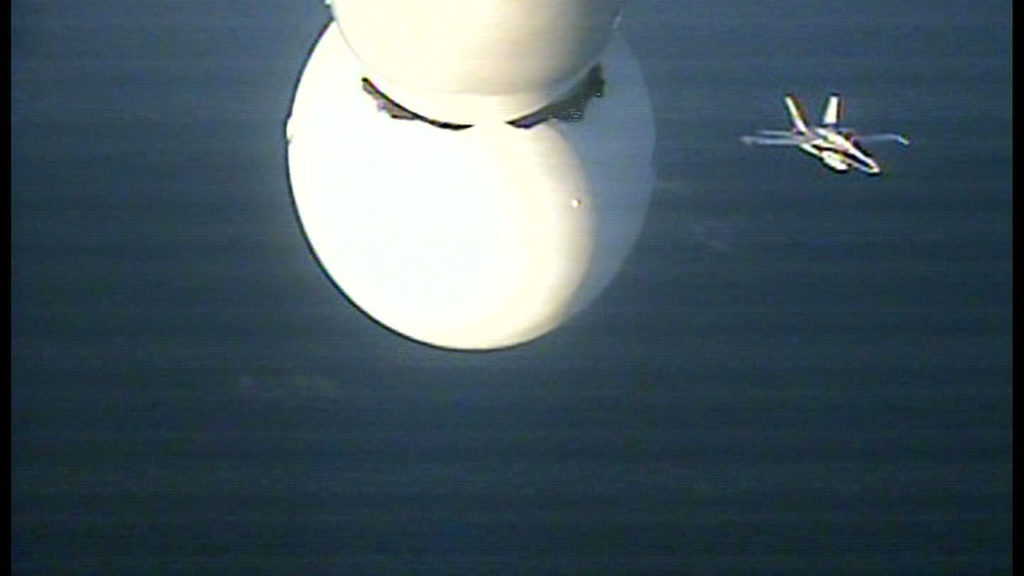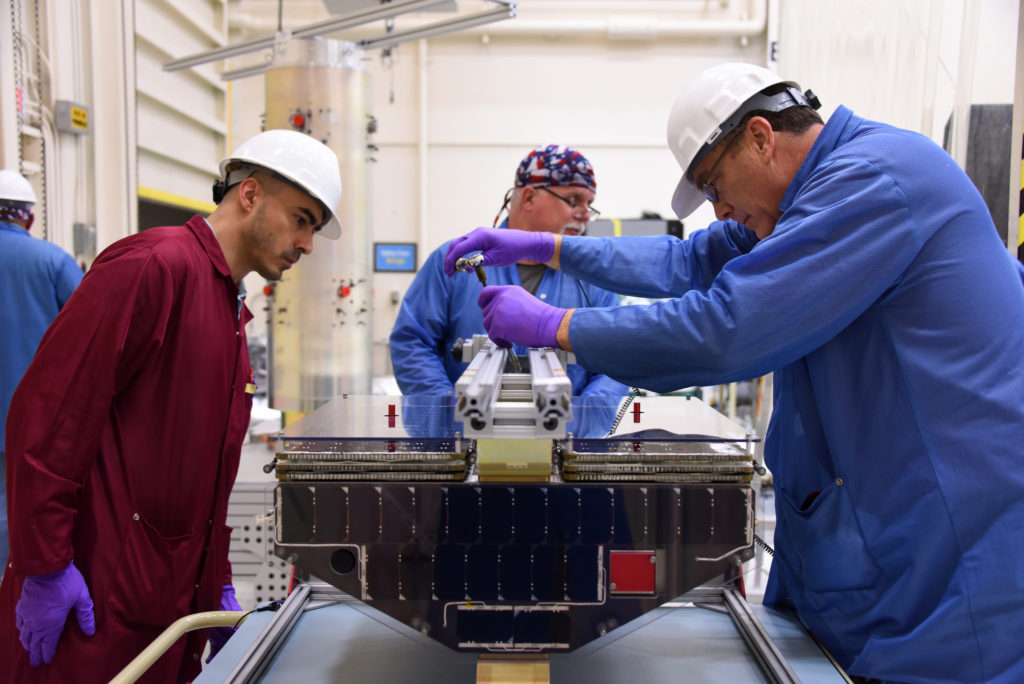
The rocket’s flight termination system has been transferred to internal power and verified to be working properly. This system would be used by the Eastern Range to end the flight if the rocket were to go off course.

The rocket’s flight termination system has been transferred to internal power and verified to be working properly. This system would be used by the Eastern Range to end the flight if the rocket were to go off course.

The L-1011 pilot has confirmed the aircraft has reached the deployment altitude of 39,000 feet. A recent survey of the Pegasus XL rocket on the belly of the plane, conducted from video filmed from the chase plane, revealed the vehicle to be in good shape.
Once CYGNSS reaches space today, the mission won’t begin right away. The microsatellites’ arrival in orbit kicks off a commissioning phase that could take up to two months. That time will be spent checking out each microsatellite’s subsystems, maneuvering them into their proper positions within the CYGNSS constellation, and ensuring that ground elements and the spacecraft themselves are ready to begin collecting science data.

Teams from a variety of organizations within NASA, academia and industry are responsible for bringing the Cyclone Global Navigation Satellite System mission to fruition.
The Space Physics Research Laboratory at the University of Michigan College of Engineering in Ann Arbor leads overall mission execution in partnership with the Southwest Research Institute in San Antonio, Texas. The Climate and Space Sciences and Engineering Department at the University of Michigan leads the science investigation, and the Earth Science Division of NASA’s Science Mission Directorate oversees the mission.
NASA’s Launch Services Program is responsible for spacecraft to launch vehicle integration and launch management, and Orbital ATK of Dulles, Virginia, is providing the Pegasus XL launch service to NASA.
The flight crew aboard the Stargazer is working through its climb/cruise checklist as it sets off toward the proper location and altitude to deploy the Pegasus XL rocket for launch at 8:35 a.m.
The NASA F-18 clase plane that will provide visual contact and video of the L-1011 and Pegasus XL rocket once they’re airborne is taxiing into position for takeoff from the Skid Strip runway at Cape Canaveral Air Force Station in Florida.